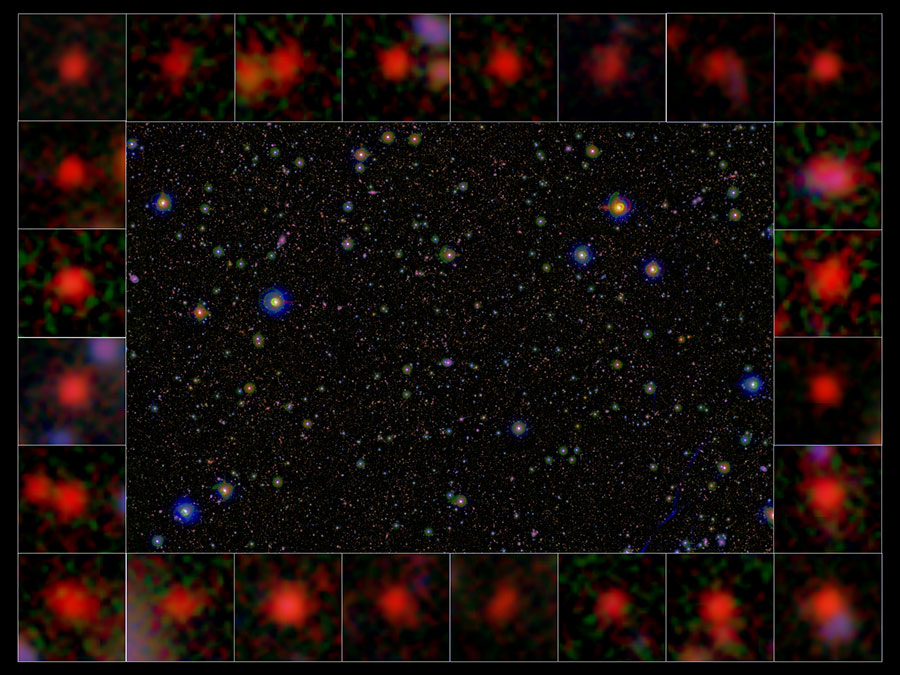
Understanding our place in space is hard, but one factor does make it easier: light travels at a finite speed. From the Sun to the Earth: About eight minutes. From the nearest star to Earth: about 4.4 years. From the most distant galaxy we can see to Earth: 13.4 billion years. That time it takes light to travel means we are always seeing what was, and the further away something is, the farther back in time we’re seeing it.
By looking at collections of galaxies located at similar distances, we can study how the universe looked at different times in history. All those galaxies eight billion light-years away tell us about the universe eight billion years ago. And, in trying to understand how we ended up in a universe full of large elliptical galaxies with no star formation, astronomers looked to the past, to galaxies whose light has traveled from 9.5-12.5 billion years, and looked for the hidden monster that killed star formation.
And they found black holes.
In work appearing in a new paper in The Astrophysical Journal, researchers led by Kei Ito have discovered that star formation in large galaxies ceased around ten billion years ago in response to the light pressure from material falling into these galaxies’ supermassive blackholes. As dust and gas fell in, it was compressed into massive disks that shone brightly. All that light actually produces pressure, and like the pressure of an exhaled breath can push away the dust in the air, the pressure of light can push away the material that would otherwise go on to form stars.
This is an unfortunate case of too much of a good thing; these systems had undergone mergers and rapid star formation, and all this activity is what started dust and gas falling into the galactic cores. There, it lit up and pushed away the material that would have formed new stars, leaving the system dead.
There are monsters out there. Don’t feed them. If you do, they’ll end star formation.
More Information
NAOJ press release
Subaru Telescope press release
“COSMOS2020: Ubiquitous AGN Activity of Massive Quiescent Galaxies at 0 < z < 5 Revealed by X-Ray and Radio Stacking,” Kei Ito et al., 2022 April 12, The Astrophysical Journal



